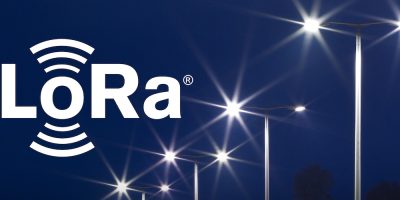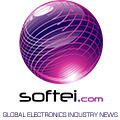A bright future for sustainable smart street lighting
Street lighting is undergoing a significant change. As lighting systems are updated with low power LED lighting to reduce energy consumption, there is a key opportunity to add additional sensors that enable the growth and management of smart cities.
Low Power Wide Area Networking (LPWAN) platforms such as Semtech’s LoRa® are central to this shift. For example, street lights can not only be monitored and managed more efficiently to control energy use, but sensors using LoRa can also provide an extensive range of data for use in traffic control, CO2 emission monitoring, city planning and many other data-driven applications.
The data gathered can positively impact city budgets and provide insights informing Smart City expansion and redevelopment as well as utility management.
For example, smart lighting system developer CITiLight1, has been using a wireless network at sub-GHz frequency bands to connect over one million street lights in 100 cities in India, saving up to 1.29 billion kilowatt-hours (kWh) of energy.
The Velociti LMS lighting management system uses LoRa transceivers from Semtech and the LoRaWAN® standard for real-time, automated monitoring. Any command directed to the street lights such as changes to lighting schedule or light intensity can be executed within seconds as the system offers less than five second command latency and 0.5-1% accuracy on metered data.
Human presence sensors can automatically switch off unneeded lights and also provide feedback on system reliability and accuracy. Predictive maintenance can highlight failing lighting units and automatically schedule repairs before a light fails. Reliable lighting infrastructure makes cities safer.
Real-time analytics are boosting smart city growth, adding intelligence, sensing and networking to street lighting systems. The data can be transmitted via a gateway that can manage hundreds of lights across an entire city.
From its inception, LoRaWAN was designed as a robust low-power, long-range technology in the 868MHz and 920MHz bands for The Internet of Things (IoT), which enables the connection of hundreds of street lights, either in proprietary networks or via the growing number of LoRaWAN network providers. Once that capability has been installed, the network is also available to other sensors, essentially for free.
An example is IoT solutions provider Wellness TechGroup, which specialises in public utility digitisation projects. Wellness TechGroup created a software platform called WeLight, which manages and regulates energy consumption in order to maximise the potential of lighting infrastructure.
This system utilises the LoRaWAN standard, chosen as the most convenient wireless connectivity option due to its low cost and ease of use in smart city applications. A city using the system then benefits from convenient access to the same LoRaWAN network for all of its smart utility and smart metering applications.
Additional sensors can be employed to tap into the same network, whether placed on lamp posts alongside smart lighting infrastructure or in other strategic areas across the city. With a wireless network already established and available, other battery-powered sensors can be quickly and easily installed to provide actionable insights into city operations. This can entail sensors which measure roadside air particles, or the amount of carbon dioxide generated at selected sites. Traffic monitoring sensors in particular can help assess detailed patterns of activity so that city planning decisions can be based on robust data.
The availability of this data establishes opportunities for digital twin models. These models utilise sensor data and build a digital twin of the smart city. A smart city’s digital twin can be used for real time monitoring and control but can also be used to test different management approaches. Changes can be made to traffic flows or other features in the model, and the consequences evaluated before they are implemented in the real world.
To accomplish this, WeLight, for example, equips the lighting infrastructure with both intelligence and connectivity. Each lighting unit is converted into a data server, so lighting units become nodes in the wider IoT ecosystem.
LoRa also enables smarter lighting and sensing in areas that do not have electrical infrastructure in place. Using photovoltaic cells and local battery storage, smart lighting systems act as a gateway for multiple sensors. This data can be transmitted to the Cloud in the absence of a network by connecting directly to satellites in Low Earth Orbit (LEO). The latest version of LoRa devices add robust protocols that allow for this direct connection, and several network operators are utilising LoRa chipsets when launching constellations of satellites to provide worldwide access to lighting controls and data.
More broadly, smarter management and monitoring leads to cost and energy savings, which are critical issues for today’s cities. Using low-cost wireless networks to control and monitor smart street lights makes possible new opportunities for a wide range of sensors to collect relevant data, generating more sophisticated insights into the operation of a living, breathing smart city.
Semtech, the Semtech logo and LoRa are registered trademarks or service marks of Semtech Corporation or its affiliates.
By Marc Pegulu, Vice President of IoT Product Marketing and Strategy for Semtech’s Wireless and Sensing Products Group
Semtech and CITiLIGHT Transform Smart City Street Lighting With LoRaWAN®




